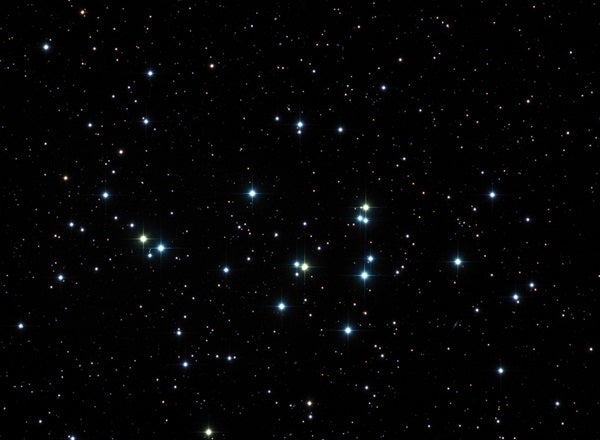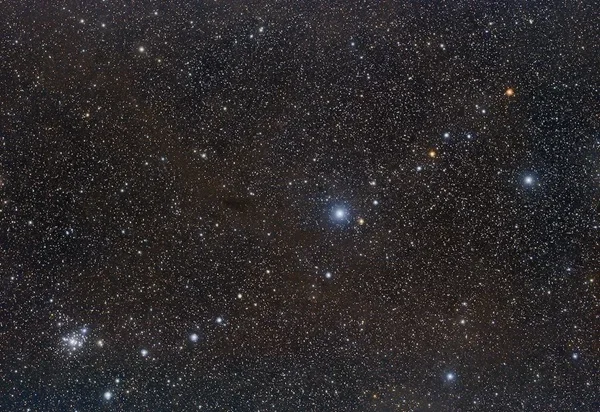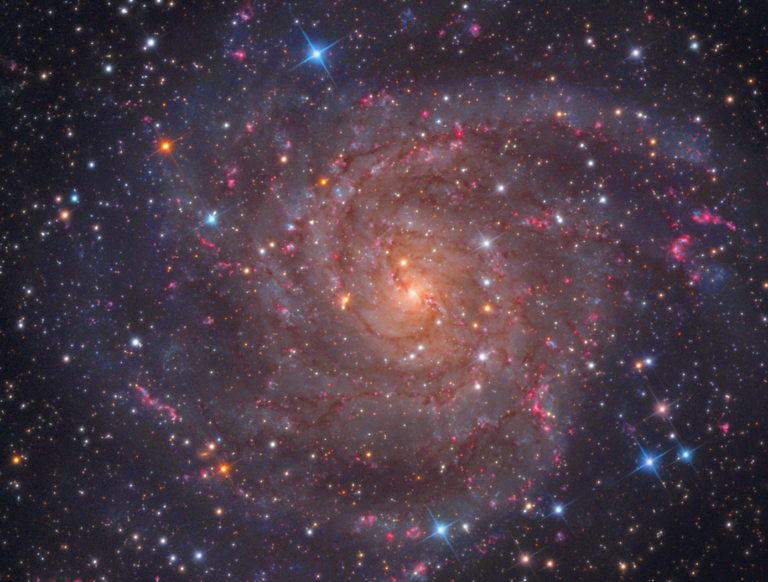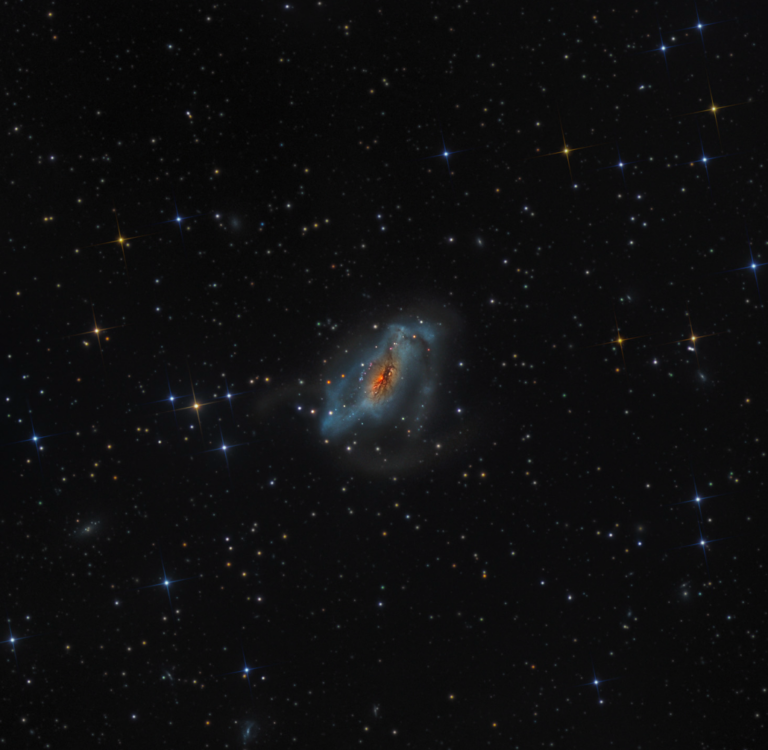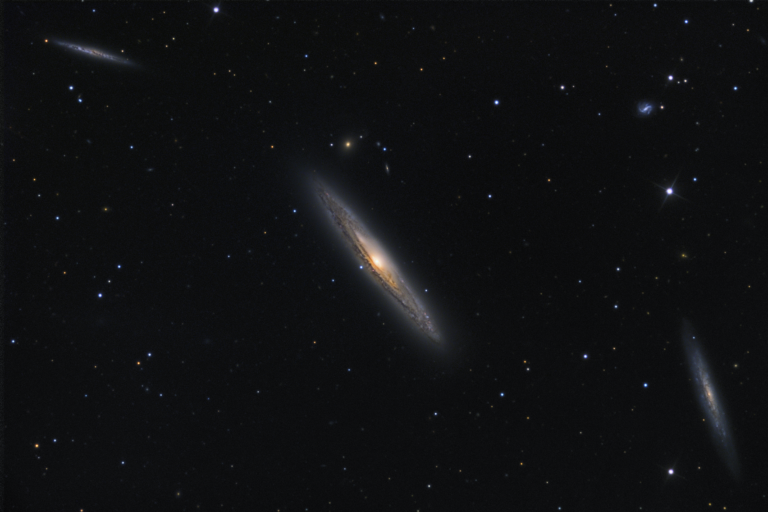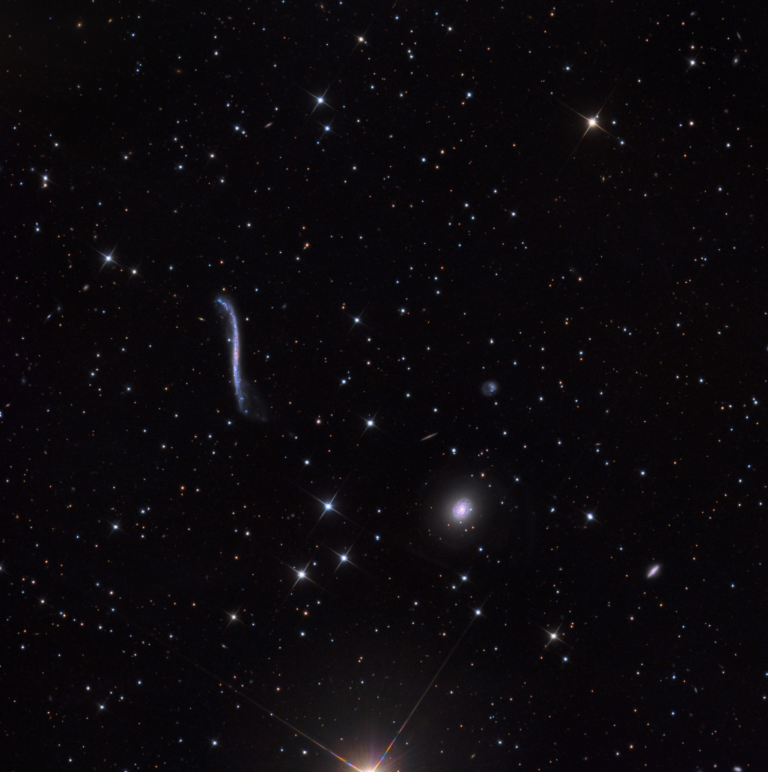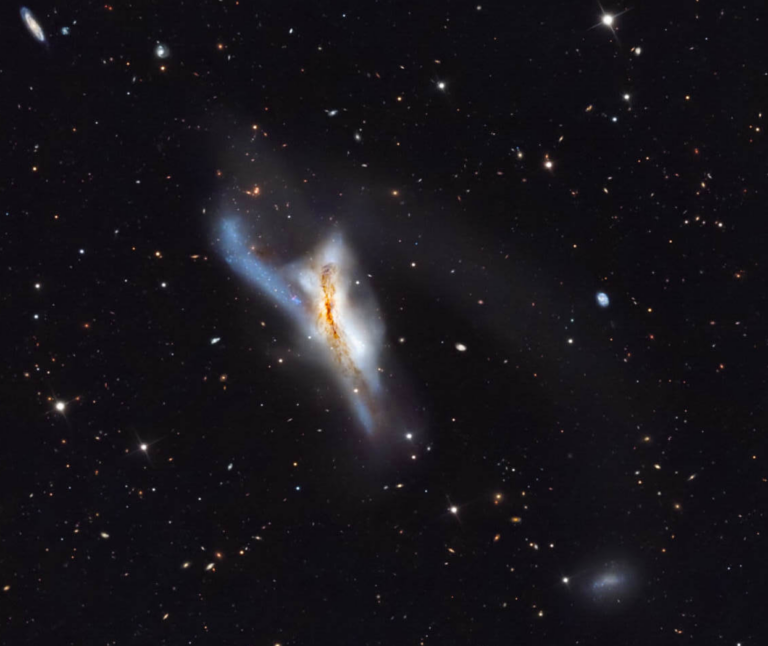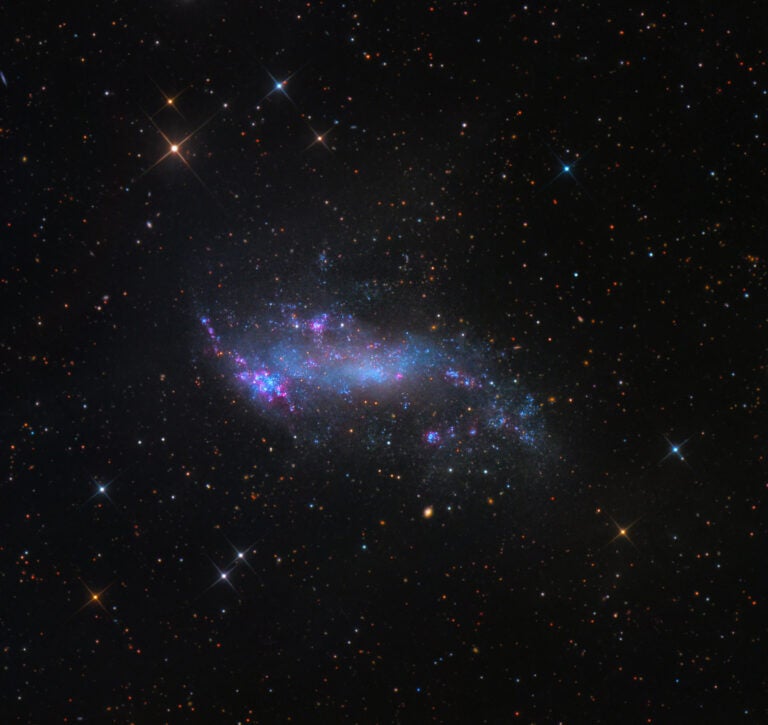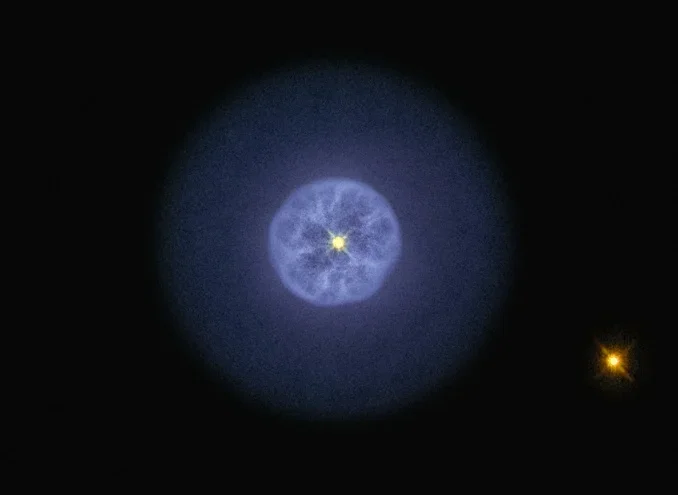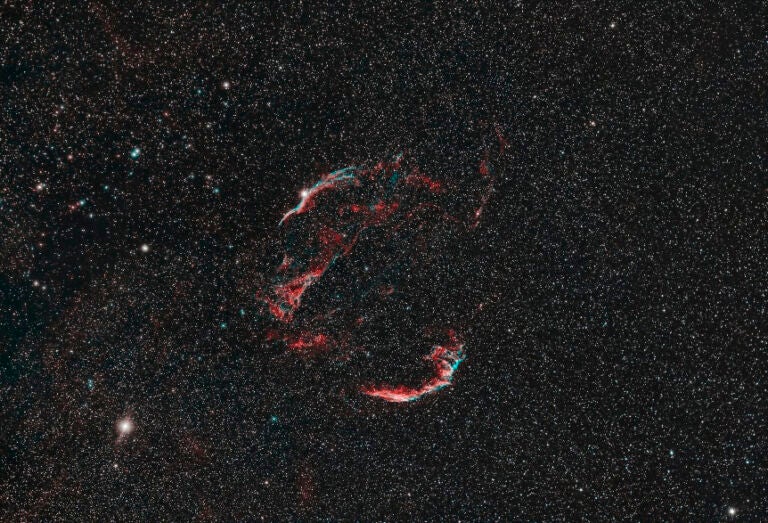If you’re away from city lights this March, face south after twilight ends and look about halfway up the sky for the Beehive Cluster (M44) in Cancer the Crab. To the unaided eye, M44 appears as a pale patch of ghostly light. It lies roughly midway between Regulus (the Alpha [α] star of Leo the Lion) and Pollux, the southeasternmost “Twin” star in Gemini. It looks as if someone snatched a section of Milky Way and placed it in that stellar desert to breathe life into the area.
M44 is indeed one of the brightest naked-eye open star clusters. It lies only 600 light-years from Earth and has the distinction of outshining all but one star within its constellation’s boundaries. As with the Milky Way, it appears misty to the unaided eye because most of the suns that make it up are too dim for viewing without optical aid; most of them also lie too close together for the eye to resolve individually.
Raise binoculars to M44, however, and the haze will splinter into a collection of some 80 suns brighter than magnitude 10. Remove the binoculars from your eyes, and the cluster will dissolve again into a breath of light — and therein lies a story.
Classically, the naked-eye view of M44 is known as the Praesepe, the Latin word for “manger,” and the origin of the Italian presepio, meaning “nativity scene.” In this view, M44’s soft glow is the bed of hay in Christ’s crib, while the nearby stars Gamma (γ) and Delta (δ) Cancri — magnitudes 4.7 and 3.9, respectively — are the two guardian aselli, or donkeys: Asellus Borealis and Asellus Australis, respectively.
In ancient China, M44 was Tseih She Ke, the “exhalation of piled-up corpses” — apparently the last gasps of flood victims or vapors from prisoners tossed into trenches en masse after execution. When I visualized these gruesome scenes while looking at the cluster with unaided eyes under a dark sky, I could see these “bodies in the mist.” With a long, dedicated effort, I resolved a dozen faint stars within the milky confines of the cluster. Indeed, M44 contains 15 stars that shine between magnitude 6.3 and 7.5. Many lie within a north-south “trench” of milkiness that forms the cluster’s elongated naked-eye major axis.
Land of the living dead
The Chinese saw other spectral forms in the region around the Praesepe. They interpreted the trapezoidal asterism of 4th- and 5th-magnitude stars surrounding the cluster — Delta, Gamma, Theta (θ), and Eta (η) — as Gui, meaning “disembodied spirits” or ghosts. Together, M44 and its four attendant stars were seen as another asterism in the lunar mansion Yugui (meaning “carting ghosts”), which was thought to “preside over executions and other dire fates,” according to The Book of Changes: A Bronze Age Document. In this view, M44 would be a heap of corpses carted through the land of the living dead.
Finally, in a less sinister fashion, the late British astronomy popularizer Patrick Moore noted in his Cambridge Guide to the Stars and Planets (Cambridge University Press, 1997) that the modern-day pattern of Cancer “resembles a very dim and ghostly Orion.” The pattern is formed by Beta (β), Alpha, Delta, Iota (ι), and Chi (χ) Cancri.
Send your interpretation of the Beehive Cluster to me at sjomeara31@gmail.com.


